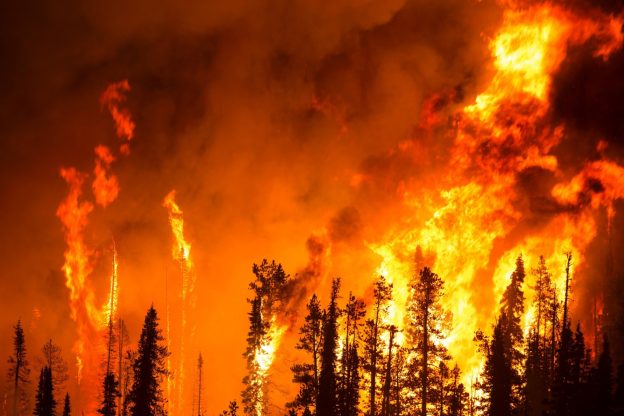
The wildfires that started in Maui on Aug. 8 have left destruction and devastation in their wake. The response by the local and federal government has been rightfully criticized by the media and other U.S. citizens. The reality is:
114 people are dead.
Thousands are missing.
Two thousand two hundred structures have been destroyed and hundreds more damaged.
Two thousand one hundred seventy acres of land are decimated.
Where was President Joe Biden during the carnage? He was on vacation in Lake Tahoe at the residence of climate activist and Democratic donor Tom Steyer. He shortened his vacation by a day to see the aftermath of the wildfires on Aug. 21 and remains there now.
What did Herman Andaya, the Maui Emergency Management Agency administrator, do as the fires raged through seaside towns and residencies? He neglected to sound off any emergency alarms and later said that he didn’t regret his choice to do so because the loss of human life would’ve occurred either way.
“I do not,” Andaya said when asked if he regretted his decision to not sound off the emergency alarms. “We were afraid people would have gone ‘mauka’ [the mountainside of the road] and if that was the case, they would’ve gone into the fire.”
Andaya later resigned from his position, citing “health reasons.”
The lackadaisical response from both the local and federal governments is shocking when compared to aid that has been administered throughout the world by the United States, such as the $75 billion sent to Ukraine by the Biden administration for “humanitarian, financial, and military support.”
In contrast, the Biden administration pledged that each household may be eligible to receive $700 for Critical Needs Assistance, as well as $5.6 million pledged by FEMA and administered to 2,000 households — that’s $2,800 to each person who applied for aid. In total, the $3,500 given to U.S. citizens who survived the Maui fires is only a fraction of the aid provided to a country overseas.
Not only do the numbers show the disservice the federal government has performed for its own citizens, but last week the Biden administration asked Congress to approve an additional $24 billion for the war in Ukraine, which would increase the amount of aid spent in Ukraine to $135 billion.
Maui residents also face opportunistic real estate companies who have made numerous offers to buy up their land. No steps have been taken by the federal government to deter these companies aside from President Biden’s declaration to “rebuild the way the people of Maui want to build, not the way other people want to build.”
Although Hawaii Governor Josh Green has reached out to the state’s attorney general to see if there’s a possibility of imposing a “moratorium on sales of damaged or destroyed properties,” even he has stated it would most likely be contested.
The history of Hawaii has been a push and pull of native Hawaiians being forcefully removed from their land by land developers and the federal government.
James Cook, a British explorer, discovered Hawaii in 1778. He was followed by an influx of Christian missionaries who took over as leaders and business owners. They brought syphilis and other diseases, which decimated one-tenth of the native population — an estimated 10,000 people.
The Hawaiian monarchy crumbled after the death of King Kamehameha I. The missionaries, determined to convert the natives, banned many of their traditions such as dancing the hula, practicing their own forms of worship and not wearing clothes.
This aggressive colonization came to a head in 1893 when a group of American sugar planters and missionary descendants imprisoned Queen Liliuokalani in her own palace and subsequently squashed the monarchy. Sanford Dole, whose family would later create what is now known as the Dole Food Company, became the new president of Hawaii.
Dole’s reign as the corporate feudal lord of Hawaii ended when the archipelago was annexed by the United States and became recognized as a territory of the United States, changing Dole’s role to Governor of Hawaii on June 14, 1900.
To this day, Hawaiian natives continue to be subjected to forced removal of land and unfair treatment by the federal government. The building of the Thirty-Meter Telescope (TMT) on Mauna Kea (a sacred land where native Hawaiians believe all life began) is another example of the government lacking a finger on the pulse of the interests of native Hawaiians.
Hawaiian natives began protesting. Police responded by unlawfully arresting 38 Kupunas, or respected elders. The charges were later dropped, and the judge declined to re-file the charges because the case was “not in the best interests of the people of the State of Hawaii.”
The slow crawl to action for the Maui fires, the lack of protection for native Hawaiian homeowners who face greedy developers trying to buy up their land and the lack of care for Hawaiian culture and customs indicate that the government doesn’t care about these people. They care about profit and voter ratings.
As American citizens, we should be concerned.
If our government cares more about a war overseas than its people on the mainland, then the next natural disaster will likely be treated with the same deliberate inefficiency that the people of Maui have faced














